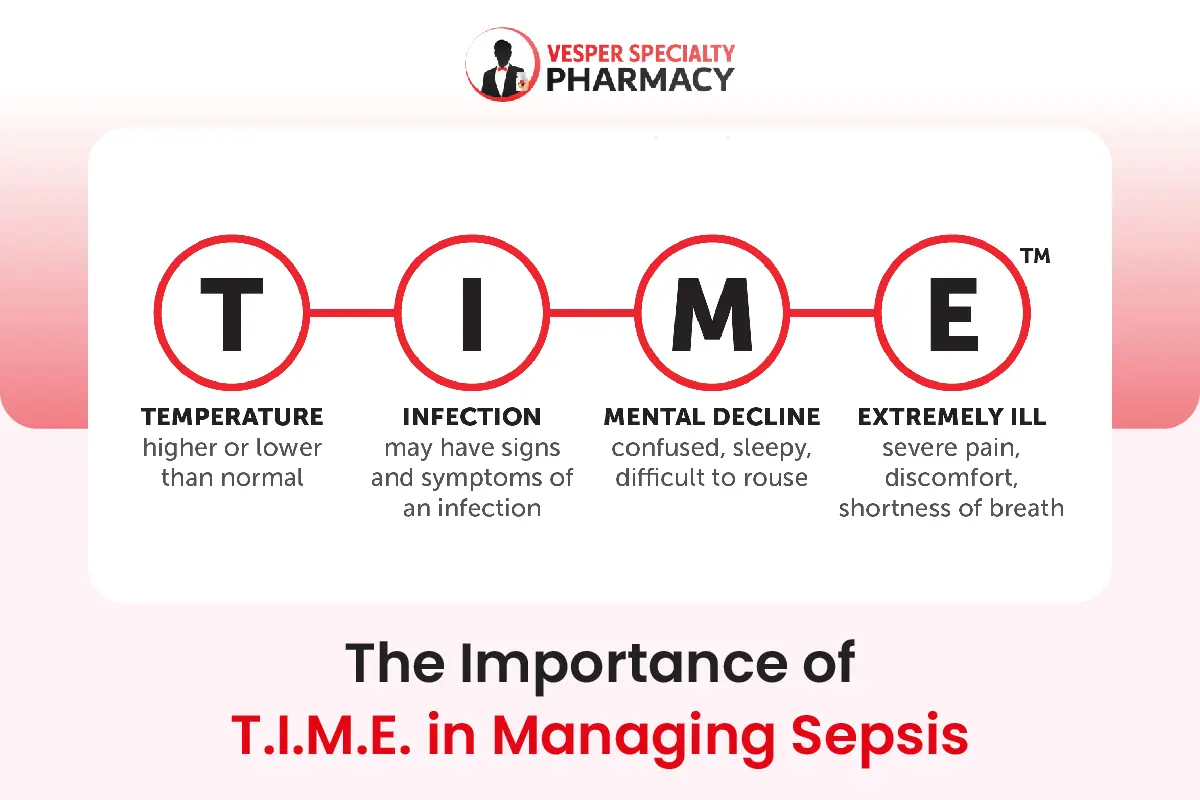Nausea is a universal human experience, one that most of us have encountered at some point in our lives. Whether it’s a queasy feeling in your stomach, the sensation of impending vomiting, or the discomfort that accompanies it, nausea can be unsettling and distressing.
In this blog post, we will delve into the world of nausea, exploring its various facets, including its causes, symptoms, and ways to alleviate it.
What is Nausea?
Nausea is a symptom characterized by an unpleasant feeling in the stomach, often accompanied by the urge to vomit. It is a complex and multifaceted sensation that can be triggered by a wide range of factors.
Nausea is not a condition in itself but rather a signal from the body that something is amiss. It serves as a protective mechanism, warning us of potential harm or discomfort.
The Physiology of Nausea
Understanding the physiology of nausea can shed light on why it occurs. Nausea often involves a combination of sensory input, nerve signals, and chemical changes in the body.
Some key factors that contribute to nausea include:
- Stimulation of the Vomiting Center: The brain has a designated area called the vomiting center, which can be activated by various triggers, including the gastrointestinal tract, the inner ear, and certain chemicals in the blood.
- Sensory Input: Signals from the stomach and intestines, as well as sensory information from the eyes, inner ear, and skin, can all contribute to the sensation of nausea.
- Chemical Messengers: Neurotransmitters like serotonin and substance P play a role in nausea. Medications that affect these neurotransmitters can influence the likelihood of experiencing nausea.
- Emotional Factors: Emotions like anxiety, stress, and fear can trigger nausea. The brain-gut connection is a complex interplay of emotions and physical sensations.
Common Causes of Nausea
Gastrointestinal Issues
One of the most common causes of nausea is gastrointestinal problems. These can include:
- Infections: Viral or bacterial infections of the stomach and intestines, such as gastroenteritis, often lead to nausea, vomiting, and diarrhea.
- Gastritis: Inflammation of the stomach lining, often due to excessive alcohol consumption, certain medications, or bacterial infections, can cause persistent nausea.
- Gastroesophageal Reflux Disease (GERD): When stomach acid flows back into the esophagus, it can lead to heartburn and nausea.
- Food Poisoning: Consuming contaminated food or beverages can result in nausea and vomiting.
Motion Sickness
Motion sickness occurs when there is a disconnect between what your eyes perceive and what your inner ear senses in terms of motion. It’s a common cause of nausea, particularly during travel by car, boat, or plane.
Medications
Certain medications, especially those that affect the central nervous system, can cause nausea as a side effect. This is often the case with pain relievers, antibiotics, and certain psychiatric medications.
Pregnancy-Related Nausea (Morning Sickness)
Many pregnant individuals experience nausea and vomiting during the early stages of pregnancy, a condition commonly referred to as morning sickness. Despite its name, morning sickness can occur at any time of the day.
Food Poisoning
Consuming contaminated food or beverages can lead to food poisoning, which is often characterized by nausea, vomiting, diarrhea, and abdominal pain.
Migraines
Migraine headaches are known for causing severe, throbbing head pain, but they can also bring about nausea and vomiting in some individuals.
Emotional Factors
Emotions like anxiety, stress, and fear can trigger nausea. This connection between the mind and the body highlights the intricate relationship between our psychological state and physical sensations.
Understanding the potential causes of your nausea can help in both managing and preventing it. If you’re experiencing persistent or severe nausea, it’s essential to consult a healthcare provider to determine the underlying cause and receive appropriate treatment.
Symptoms and Signs of Nausea
Nausea manifests differently in each person, but there are common symptoms and signs associated with this uncomfortable sensation. Recognizing these signs can help you address nausea more effectively:
Feeling Queasy or Unsettled
Nausea often starts as a vague feeling of discomfort or uneasiness in the stomach. It’s as if your stomach is gently protesting.
Salivating Excessively
Excessive salivation, or hypersalivation, is a common response to nausea. It can be accompanied by a bitter or metallic taste in the mouth.
Sweating
Nausea can trigger sweating, even when you’re not exerting physical effort or feeling particularly warm.
Abdominal Discomfort or Cramping
Many individuals experience abdominal discomfort or cramping along with nausea. This can range from mild discomfort to more intense pain.
Vomiting
Nausea often culminates in vomiting, which can provide temporary relief from the queasiness. Vomiting is the body’s way of expelling potentially harmful substances.
Recognizing these symptoms and signs can be helpful, especially if you’re trying to manage nausea or determine its underlying cause. However, it’s crucial to remember that nausea can vary in intensity and presentation.
When to Seek Medical Help
While nausea is a common and often temporary symptom, there are situations in which it’s crucial to seek medical attention promptly. Don’t ignore the following warning signs:
Severe or Persistent Nausea
If your nausea is severe or persists for an extended period, it may be indicative of an underlying condition that requires medical evaluation.
Dehydration
Frequent vomiting or prolonged nausea can lead to dehydration. Signs of dehydration include dry mouth, dark urine, dizziness, and excessive thirst.
Blood in Vomit
If you notice blood in your vomit or if the vomit resembles coffee grounds in color and texture, seek immediate medical care. This could indicate internal bleeding.
High Fever
Nausea accompanied by a high fever may be a sign of an infection or another medical condition that requires treatment.
Head Injury
If you’ve experienced a head injury and subsequently develop nausea, it’s essential to seek medical evaluation. Nausea following a head injury could be a sign of a concussion or other serious brain injury.
In these situations, seeking medical care promptly is crucial to rule out serious underlying conditions and receive appropriate treatment.
Diagnosing the Underlying Cause
Determining the underlying cause of your nausea often involves a series of diagnostic steps conducted by a healthcare provider. Here’s an overview of the diagnostic process:
Medical History Assessment
Your healthcare provider will begin by taking a detailed medical history, including asking about the specific characteristics of your nausea. They may inquire about the onset, duration, and severity of your symptoms, as well as any potential triggers or factors that alleviate or worsen the nausea.
Physical Examination
A thorough physical examination can provide important clues about the underlying cause of nausea. Your healthcare provider will assess vital signs, such as blood pressure, heart rate, and temperature. They will also examine your abdomen for tenderness or other signs of gastrointestinal issues.
Laboratory Tests
Blood tests and other laboratory tests may be ordered to assess various factors that could be contributing to your nausea:
- Blood Tests: A complete blood count (CBC) can help detect signs of infection or anemia. Blood chemistry tests may reveal electrolyte imbalances.
- Stool Tests: In cases of gastrointestinal infections, stool samples may be analyzed for the presence of pathogens or blood.
- Urine Tests: Urinalysis can provide information about kidney function and potential metabolic issues.
Imaging Studies
In some cases, imaging studies may be recommended to visualize the internal structures of your body:
- Ultrasound: Abdominal ultrasound can help assess the condition of your liver, gallbladder, and other abdominal organs.
- CT Scan: A computed tomography (CT) scan may be used to visualize the brain, abdomen, or other areas of concern.
- Endoscopy: If there are suspicions of gastrointestinal issues, an endoscopy may be performed to directly view the inside of the digestive tract.
Specialized Tests
Depending on the suspected cause of your nausea, specialized tests may be necessary:
- Electroencephalogram (EEG): If neurological conditions are suspected, an EEG can monitor brain activity and detect abnormalities.
- Vestibular Testing: For individuals experiencing dizziness and nausea, vestibular function tests may be conducted to assess inner ear function.
The diagnostic process can be tailored to your specific symptoms and medical history, and it may involve multiple steps to pinpoint the underlying cause accurately.
Managing and Treating Nausea
Managing and treating nausea often involves addressing the underlying cause and alleviating symptoms. Here are some strategies and treatments commonly used to manage and relieve nausea:
Over-the-Counter Anti-Nausea Medications
- Antihistamines: Medications like dimenhydrinate (Dramamine) or meclizine (Bonine) can help with motion sickness and mild nausea.
- Bismuth Subsalicylate: Products like Pepto-Bismol can help relieve nausea associated with gastrointestinal issues.
Prescription Medications
- Antiemetics: Prescription-strength anti-nausea medications may be recommended for severe or persistent nausea. These medications work on specific receptors in the brain to reduce nausea and vomiting.
- Prokinetic Agents: In cases of nausea related to delayed gastric emptying or gastroparesis, medications that promote stomach emptying may be prescribed.
Lifestyle Changes
- Dietary Adjustments: Avoiding spicy, fatty, or greasy foods can help minimize nausea. Eating small, frequent meals may also be beneficial.
- Hydration: Staying hydrated is crucial, especially if you’re experiencing vomiting or diarrhea. Sipping clear fluids like water, broth, or electrolyte solutions can help prevent dehydration.
- Rest: Resting in a comfortable and quiet environment can aid in nausea relief. Lying down with your head elevated may be particularly helpful.
Alternative Remedies
- Ginger: Ginger has long been used as a natural remedy for nausea. It can be consumed as ginger tea, ginger candies, or ginger supplements.
- Acupressure: Some individuals find relief from nausea through acupressure wristbands, which stimulate pressure points on the wrist.
Treatment of Underlying Conditions
Addressing the underlying cause of nausea is paramount. This may involve treating infections, managing gastrointestinal issues, or adjusting medications.
The choice of treatment will depend on the cause and severity of your nausea. It’s essential to work closely with your healthcare provider to determine the most appropriate treatment plan.
Nausea in Specific Populations
Nausea can affect individuals of all ages and backgrounds, but it may manifest differently in specific populations. Here are some considerations for nausea in particular groups:
Nausea During Pregnancy (Morning Sickness)
Morning sickness, characterized by nausea and vomiting during pregnancy, is a common occurrence. It typically occurs during the first trimester but can extend throughout pregnancy for some individuals.
Nausea in Children
Children can experience nausea due to various causes, including infections, motion sickness, or anxiety. Managing nausea in children may require special attention to their comfort and hydration.
Nausea in the Elderly
Elderly individuals may be more susceptible to certain causes of nausea, such as medication side effects or underlying medical conditions. Careful medication management and addressing potential gastrointestinal issues are essential in this population.
Nausea in Cancer Patients (Chemotherapy-Induced Nausea and Vomiting)
Patients undergoing chemotherapy often experience nausea and vomiting as side effects. There are specific antiemetic medications and supportive care strategies to manage chemotherapy-induced nausea and vomiting.
Understanding how nausea manifests in specific populations can guide healthcare providers in tailoring treatment approaches to address the unique needs of these individuals.
Preventing Nausea
While not all causes of nausea can be prevented, adopting certain lifestyle habits and preventive measures can reduce the risk of experiencing nausea:
Motion Sickness Prevention Techniques
If you’re prone to motion sickness, consider strategies such as focusing on the horizon, avoiding reading or using screens during travel, and taking breaks during long journeys.
Food Safety Practices
To reduce the risk of food poisoning, follow safe food handling practices, such as proper cooking, refrigeration, and handwashing.
Stress Management
Stress and anxiety can contribute to nausea. Engaging in stress-reduction techniques such as relaxation exercises, meditation, or yoga can help manage these emotional factors.
Pregnancy-Related Nausea Prevention
Pregnant individuals experiencing morning sickness may find relief through dietary modifications, such as eating small, frequent meals and avoiding trigger foods.
Gradual Position Changes
If you’re prone to orthostatic hypotension (a drop in blood pressure upon standing), make gradual changes in position to minimize the risk of dizziness and nausea.
Living with Nausea
Coping with chronic or recurrent nausea can be challenging, but there are strategies that can help improve your quality of life:
Dietary Modifications
Working with a healthcare provider or dietitian to identify trigger foods or dietary changes that can help manage nausea.
Keeping a Nausea Diary
Keeping a diary of your nausea episodes, including triggers, timing, and severity, can provide valuable insights for managing and preventing nausea.
Emotional and Psychological Support
Recognize that chronic or recurrent nausea can have emotional and psychological effects. It’s essential to address any anxiety or depression that may arise as a result of your condition. Consider seeking counseling or therapy to help manage these aspects of living with nausea.
Support Systems
Seek support from friends, family, or support groups. Sharing experiences and advice with others who have experienced nausea can be invaluable in coping with the condition.
Adaptations to Daily Life
Make necessary adaptations to your daily routine to accommodate nausea. This may include using assistive devices, such as a cane or walker, to improve stability if dizziness is a contributing factor.
Medication Management
If you’re taking medications that list nausea as a side effect, discuss this with your healthcare provider. They may adjust your medication or recommend alternatives.
Living with nausea often requires patience, resilience, and a proactive approach to managing symptoms. By working closely with healthcare providers and incorporating lifestyle changes, you can improve your quality of life and reduce the impact of nausea on your daily activities.
Conclusion
Nausea is a complex and multifaceted symptom that can arise from a wide range of causes. While it can be uncomfortable and distressing, it’s important to remember that nausea is often treatable and manageable, especially when the underlying cause is identified and addressed.
Seeking prompt medical evaluation when necessary, following treatment recommendations, and adopting preventive measures can significantly improve one’s quality of life and reduce the impact of nausea.
If you experience persistent or severe nausea, or if you have concerns about its causes and management, do not hesitate to consult with a healthcare provider. They can provide guidance, conduct necessary tests, and tailor a treatment plan to address your specific needs.
By understanding the different causes and symptoms of nausea and taking appropriate steps for diagnosis and treatment, individuals can regain control over their well-being and minimize the impact of nausea on their daily lives.















